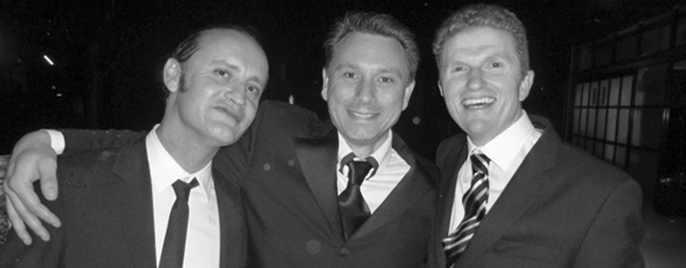What pressure was there to be faithful to the classic American novel?
Baz was acutely aware of the scrutiny that would be given to a "Baz Luhrmann" adaptation of "The Great Gatsby". Faithfully bringing the book to the screen was paramount to Baz and we were given every tool to help us do that. The cutting room was full of photo-boards, drawings, artwork, books and reels of old film footage to remind us of what we there to create. He and his team had tirelessly researched the novel and the ninety years of academic writings pertaining to it. Long before filming began, they had a thorough understanding of the geography, fashion, music and socioeconomic climate of 1920s New York and how the collision of these elements made this story tick.
The last 5 months you worked in the States while Jason and Jonathan edited in Australia. Describe how that worked.
The huge post production process became a behemoth when the editorial crew was split to accommodate a series of audience test screenings. Baz and I were in LA while the rest of post production, remained in Sydney. This could only work by having a two perfectly mirrored cutting rooms with identical media. Thanks to the time zones and an incredibly diligent team of assistants, lead by Christine Cheung, we essentially run editorial 24 hours a day. Jas and Jono would work on scenes in Sydney while LA slept. When we came to work, Baz would review those scenes and give notes via skype when Sydney woke up to allow work to continue.
What adjustments did you make after audience testing?
There is nothing more valuable than having the fresh, unbiased eyes of a test audience. They'll tell you in no uncertain terms if it's too fast, too slow, if a story point isn't working, a joke isn't funny, if the hero isn't heroic enough or if the villain isn't villainous enough. People found that it was taking too long to meet Gatsby and that once he died, too long to conclude the story. Addressing the beginning was difficult as this story requires us to meet all the peripheral characters and establish their world prior to meeting Gatsby. All we could do was remove a big overture piece that opened the film and trim where possible until Gatsby first appeared. The film felt it had several endings. We eventually realised, and the audience confirmed it, that this was Nick's story and all that mattered was how he dealt with Gatsby's death. Everything else was superfluous.
Music is a large part of Gatsby. Describe how the music influenced or enhanced the edit?
Baz's collaboration with music supervisor Anton Monsted and the many artists who were submitting music was on-going from day one. This allowed a rare opportunity for music and the edit to evolve together. The only time the edit was a slave to music was for the first big party scene. By the time the artists were found to replace “Party Rock" by LMFAO, we were in the mix. It was stipulated that Will-I-Am and Goon Rock could only write songs in the same tempo as "Party Rock" so the tracks could lay straight in and match the rhythm of the cut.
Visual Effects worked in tandem with the edit how did this inform the storytelling?
As we were creating 1920s New York in 21st century Sydney, there weren't many shots that didn't require some kind of enhancement. For the big vistas and travelling shots, it was important to know what we would eventually see and how long we'd need to see it. We were very fortunate to have our amazing VFX supervisor, Chris Godfrey and a team of previs artists present throughout post, which allowed editorial to collaborate on the type of shots that would best tell the story. We did find twhen the completed versions came in, we would sometimes have to adjust the length we'd left in the cut to allow the audience to take it in the 3D depth and scope the shot provided.
(January 2014)
